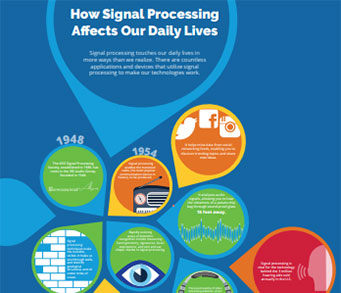SPS Feed
Top Reasons to Join SPS Today!
1. IEEE Signal Processing Magazine
2. Signal Processing Digital Library*
3. Inside Signal Processing Newsletter
4. SPS Resource Center
5. Career advancement & recognition
6. Discounts on conferences and publications
7. Professional networking
8. Communities for students, young professionals, and women
9. Volunteer opportunities
10. Coming soon! PDH/CEU credits
Click here to learn more.
The Latest News, Articles, and Events in Signal Processing

Saarland University is a campus university that is internationally recognized for its strong research programmes. Fostering young academic talent and creating ideal conditions for teaching and research are a core part of the university’s mission. As part of the University of the Greater Region, Saarland University enables students and staff to share and exchange knowledge and ideas between disciplines, between universities and across borders.

Postdoctoral position in neuroimaging data analysis and fusion
Start date: Summer 2022
Duration: One to four years (initial appointment is for one year)
Machine Learning for Signal Processing Laboratory (http://mlsp.umbc.edu) at University of Maryland Baltimore County, Baltimore, MD
Lecture Date: March 23, 2022 -- Virtual Lecture
Chapter: North New Jersey Chapter
Chapter Chair: Alfredo Tan
Topic: Policy Optimization in Reinforcement Learning: A Tale of Preconditioning and Regularization
March 28 - April 1, 2022
Register for the event
Location: VIRTUAL
View Event Flyer

Post-doctoral research position:
Extremely-low-resource radio browsing for humanitarian monitoring
Stellenbosch University, South Africa

Title: Glottal source inverse filtering for the analysis and classification of pathological speech
Keywords: Pathological speech processing, Glottal source estimation, Inverse filtering, Machine learning, Parkinsonian disorders, Respiratory diseases
Contact and Supervisor: Khalid Daoudi (khalid.daoudi@inria.fr)
Manuscript Due: September 1, 2022
Publication Date: July 2023
CFP Document
Submission Deadline: July 31, 2022
Call for Proposals Document

A postdoctoral research position is available at Johns Hopkins University in the laboratory of Dr. Mounya Elhilali to investigate representation of complex sounds in biological and artificial networks. The position is available immediately for two years, with possibility of renewal.
The ideal applicant will have a doctoral degree in computer science, electrical engineering, applied mathematics, neuroscience, psychology, hearing or brain sciences, with strong quantitative skills.
Pages
SPS Social Media
- IEEE SPS Facebook Page https://www.facebook.com/ieeeSPS
- IEEE SPS X Page https://x.com/IEEEsps
- IEEE SPS Instagram Page https://www.instagram.com/ieeesps/?hl=en
- IEEE SPS LinkedIn Page https://www.linkedin.com/company/ieeesps/
- IEEE SPS YouTube Channel https://www.youtube.com/ieeeSPS


















